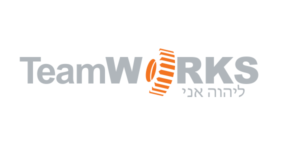Managing the Migration – Step 2: Collecting Assets
In the last article, we discussed the first step in implementing a new Computerized Maintenance Management System (CMMS). Now that you have your work orders in place and everyone is comfortable with the new CMMS, it’s time for step two. This step will most likely be to enter your assets into the system. Once assets are in place, you can start a comprehensive preventive maintenance (PM) system.
There are several ways to get the asset data collected into your CMMS. You may need to employ several of these methods depending on your situation. For our purposes we will be collecting mechanical assets, and the discussion will be methods for gathering this data.
It is important to develop a numbering standard for your asset numbers. I typically suggest using a 3 digit building code followed by a 3 digit asset type code followed by an asset number code. For example, the first Pump collected at Store 7 may have the code 015-PMP-001. A technician can tell by looking at this number what and where the asset is. This code not only means something to a barcode scanner and software program but also has meaning to the tradesmen about to work on this equipment.
The first thing you should do is to put a process in place to enter assets into the CMMS as they are purchased. This will ensure that, once collected, your data stays updated. Putting this process in place first will keep your data up to date and avoid the need to collect data again in the future. Next, look for asset data already available in an electronic format. Newer buildings may have a list of mechanical assets that were submitted by the architect or HVAC contractor. This list may be included in your CAD drawings. Other buildings may have a building control system with each major piece of equipment identified. See if that data can be exported. If you do not have the data electronically, you must choose a method of data collection.
- If time is short and money is not, you may want to contract someone to collect your asset data. The contractor will most likely use an electronic collection method to ensure accuracy and to easily import the data into your system.
- If money is short and manpower is not, you will need to send your tradesmen out to collect the data. Purchase or lease a data collection package or collect using a pencil and paper.
- If manpower and money are short, have your tradesmen collect asset data as they work on the assets, or hire some interns. It may take a long time, but eventually you’ll have all your data.
It really doesn’t matter what method(s) you choose as long as you start collecting your data. Your team needs to understand that this is not a task that might be done but a task that will be done, and collecting and maintaining this data is now part of their daily routine and must be completed.
TeamWORKS has many years’ experience guiding our customers through the asset collection process. Feel free to reach out to us if you have any questions or may need some advice or guidance.
Happy collecting!

